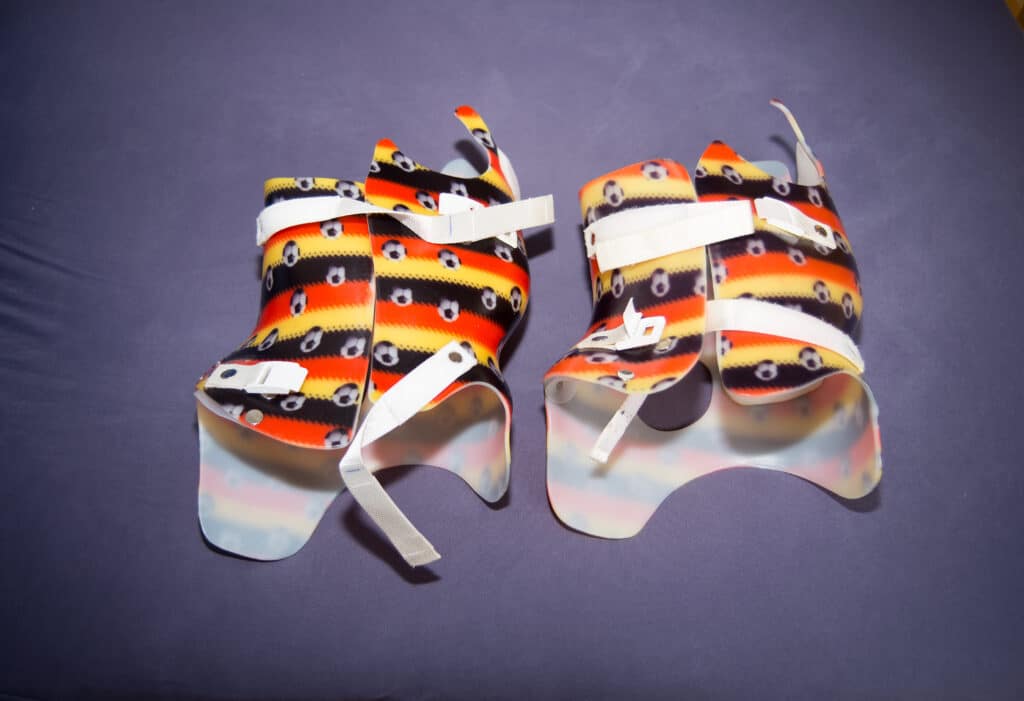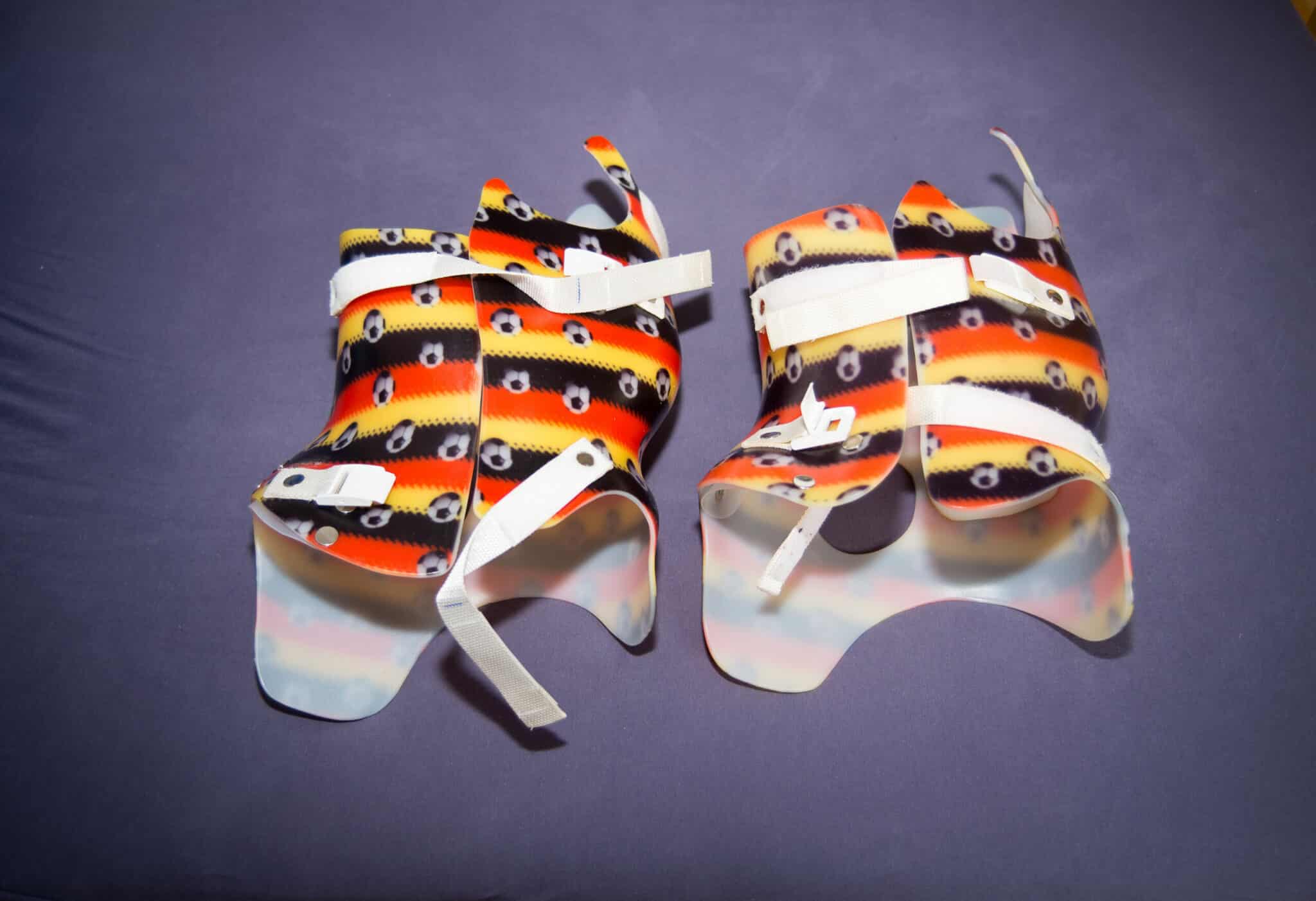Spine braces are orthopedic devices worn around the torso to provide support and stability to the spine. There are many different types of braces designed to treat different conditions such as fracture or spinal deformities like scoliosis.
What is scoliosis?
Scoliosis is a condition in which the spine has an abnormal lateral (side-to-side) curve. This curvature can take the shape of a “C” or “S” and can cause the spine to twist and rotate, leading to back pain and potential respiratory or digestive problems.
What is spinal bracing?
Spinal bracing for scoliosis is the use of a brace to treat spinal curvatures caused by scoliosis. The brace applies pressure to the curves in the spine to prevent progression and correct the abnormal curvature.
The brace is typically made of plastic or a combination of plastic and metal and is custom-made to fit the patient’s torso. It is worn against the skin, under clothing, and is adjusted as the patient grows.
When is spinal bracing used?
Bracing for scoliosis is typically recommended for children and adolescents who are still growing and have a curve that measures between 25 to 40 degrees on an X-ray. This is typically considered a “moderate” amount of curvature.
The use of a brace is often recommended as a non-surgical treatment option for children and adolescents with scoliosis who are still growing, with the goal of avoiding future corrective surgery.
What are the different types of spinal braces?
There are several types of braces used for scoliosis, including:
- Boston brace: This is a type of TLSO brace that is designed to fit snugly against the torso, applying pressure to the curves in the spine to prevent progression. It is often used for patients with mild to moderate scoliosis.
- Milwaukee brace: This is a neck-to-pelvis brace that uses metal rods to maintain the shape of the brace. It is usually worn for 23 hours a day and is made of plastic, foam, and metal.
- Charleston brace: This is a type of TLSO brace that is worn at night while the patient is sleeping. It is designed to correct the curve while the patient is in a prone position, and is usually made of plastic, foam, and metal.
- Rigo-Cheneau brace: This is a type of TLSO brace that is custom-made to fit the patient’s body, and uses curved bars and flexible bands to correct the curve. It is designed to be more comfortable and less noticeable under clothing.

The type of brace recommended for a patient with scoliosis will depend on the patient’s specific circumstances, including the severity of the curve, the patient’s age, growth patterns, and overall health. It’s important to consult a doctor for an accurate diagnosis and the best treatment options, including the type of brace that may be most suitable.
How long do I need to wear a scoliosis brace?
For children and adolescents, the duration of bracing can vary from several months to several years, depending on the severity of the curve and the patient’s growth patterns. Bracing is most important during periods of rapid growth.
Once the patient stops growing, bracing is typically discontinued, but it’s important to continue regular follow-up appointments with a doctor to monitor the curve.
The brace is worn for a portion of the day, usually at least 12-18 hours, depending on the severity of the curve. Wearing the brace for the full time prescribed will help reduce the chances of needing a corrective surgery in the future.
How will a scoliosis brace affect my daily life?
Although bracing is a common and non-invasive treatment for scoliosis, it can affect a patients daily life in several ways. However, the benefits of bracing often outweigh the challenges, and patients usually return to their normal activities once the brace is removed.
Some ways bracing may affect daily life includes:
- Comfort: Some patients may experience discomfort while wearing the brace, especially in the beginning. This can include chafing, irritation, or discomfort due to the pressure applied by the brace.
- Physical activities: Some patients may experience difficulty with physical activities such as playing sports, due to the brace’s bulk and weight. However, with the proper adjustments, many patients are able to participate in physical activities while wearing the brace.
- Clothing: The brace may be visible under clothing, and it may affect the types of clothing a patient can wear. Some patients may need to make modifications to their clothing, such as wearing looser shirts or avoiding tight clothing, to accommodate the brace.
- Sleep: Sleeping can be disrupted for some patients while wearing the brace, especially in the beginning. Some patients may have difficulty sleeping comfortably and may need to adjust their sleeping position.
Overall, the goal of scoliosis bracing is to slow or stop the progression of the curvature, which can ultimately help improve the patient’s quality of life. With proper care and use, most patients find that the benefits of bracing outweigh any negative impact on their daily life. It’s important to consult a doctor for a proper evaluation and treatment plan, including any recommendations for how to manage the effects of bracing on daily life.
